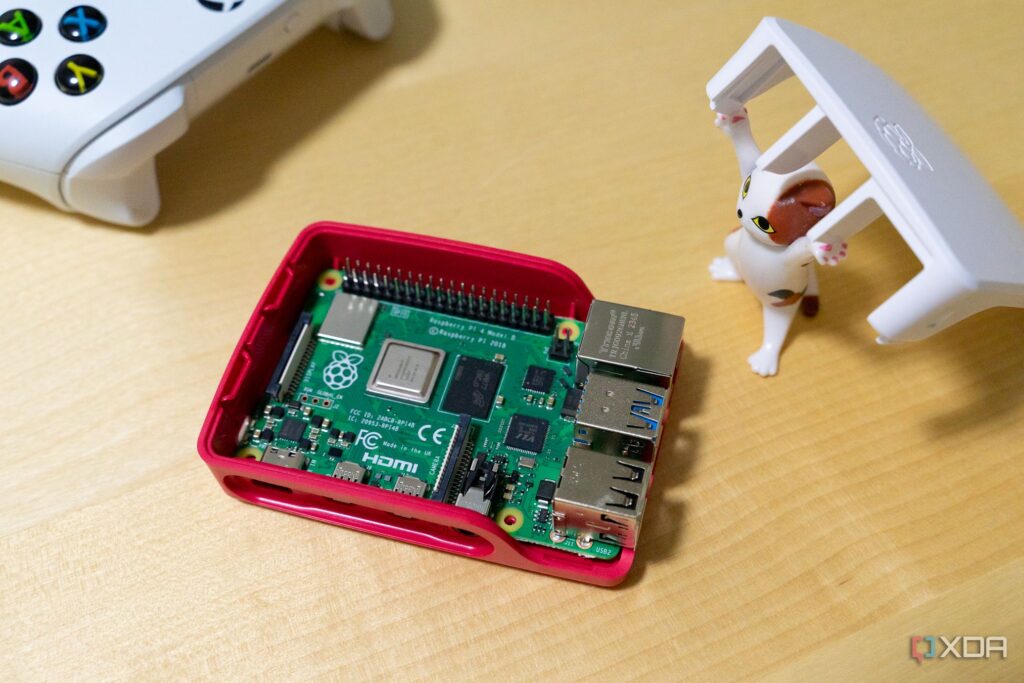
Self-hosting enthusiasts often grapple with the decision of whether to use single-board computers (SBCs) like the Raspberry Pi 4B or opt for containerization with platforms such as Docker. This choice affects efficiency, performance, and costs in home lab setups. As self-hosting projects become more popular, understanding the strengths and weaknesses of each option is crucial for optimized performance.
Performance Considerations
For basic self-hosted applications, both SBCs and containers can serve effectively. A typical setup might involve an SBC like the Raspberry Pi 4B, which is often sufficient for low-level tasks. On the other hand, for more demanding applications, such as logging or media servers with numerous users, performance becomes a significant factor.
Running multiple container services on a single device can strain resources, leading to slowdowns. A dedicated SBC for each service helps mitigate this issue, as it allocates resources to a single task. Yet, SBCs have their limitations; they perform well under low power conditions but may falter with complex tasks. Both setups offer scalability, but the complexity of adding additional SBCs can be daunting.
Clustering SBCs can enhance performance by distributing the workload, but it complicates management. Conversely, scaling a single-host system is often restricted by compatibility and hardware limits. Fortunately, transitioning between setups is relatively straightforward, especially with containers designed for portability.
Points of Failure and Reliability
The reliability of your setup can significantly impact your self-hosting experience. In a multi-container environment, if the central host experiences downtime, all services hosted on that machine are affected. In contrast, an SBC setup offers improved fault tolerance. If one board fails, the impact is isolated to that specific service, allowing the remaining boards to continue functioning.
Establishing a physical compute cluster with SBCs can enhance both performance and redundancy. If one device in the cluster malfunctions, others can take over the workload without interrupting services. This flexibility is a considerable advantage for those managing multiple applications.
Management of either setup can be straightforward. An SBC cluster can be administered from any of its nodes, while container environments can utilize orchestration tools like Docker Swarm or be managed directly from a central host.
Space and Cost Efficiency
The compact nature of SBCs makes them ideal for space-constrained environments. Unlike traditional computers, SBCs such as the Raspberry Pi consume minimal power—approximately 12W under load—allowing them to operate continuously without significant electricity costs. Additionally, they can run headless, eliminating the need for monitors or physical input devices, thereby saving even more space.
In contrast, traditional desktop setups may require periodic restarts, particularly with operating systems like Windows 11, leading to potential downtime. Desktop processors also demand more robust cooling solutions and power supplies, contributing to increased noise and energy consumption.
When considering costs, the affordability of SBCs is a key factor. The Raspberry Pi 4B is priced between $35 and $75, including essential components like the motherboard, CPU, and memory. While containers may seem cheaper for smaller home labs, costs can escalate as workloads increase and performance ceilings are reached.
Repairability is another aspect to consider; though individual components on an SBC cannot be replaced, the low cost of the boards makes them easier to replace compared to traditional PC hardware.
Ultimately, the decision between using a centralized host with containers or distributing services across multiple SBCs is not straightforward. Each approach has its merits and challenges, and the best choice often depends on specific use cases and personal preferences. Self-hosting allows for experimentation, and the freedom to explore different setups can lead to valuable learning experiences.
Both SBCs and containers offer unique advantages for self-hosting. As technology continues to evolve, resources are available to assist users in setting up their own systems. For those interested in further exploring these options, resources such as the article by Ayush Pande provide additional insights into the benefits of NAS (Network-Attached Storage) as another viable solution for self-hosting.







